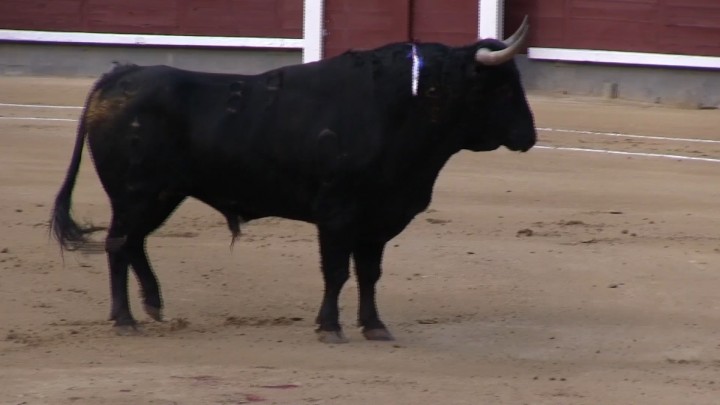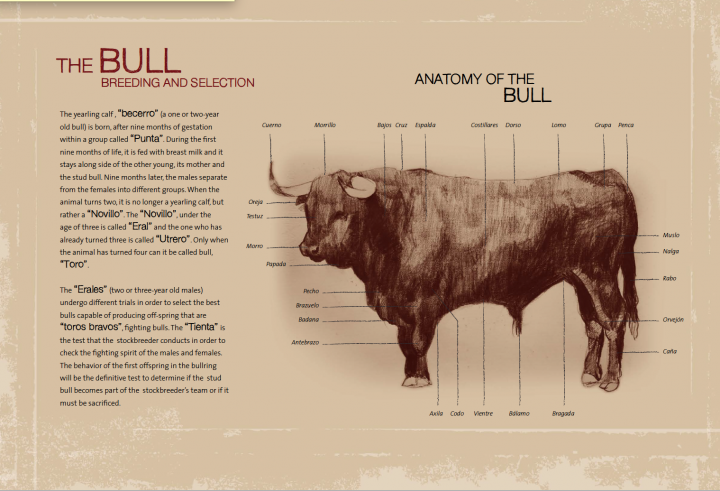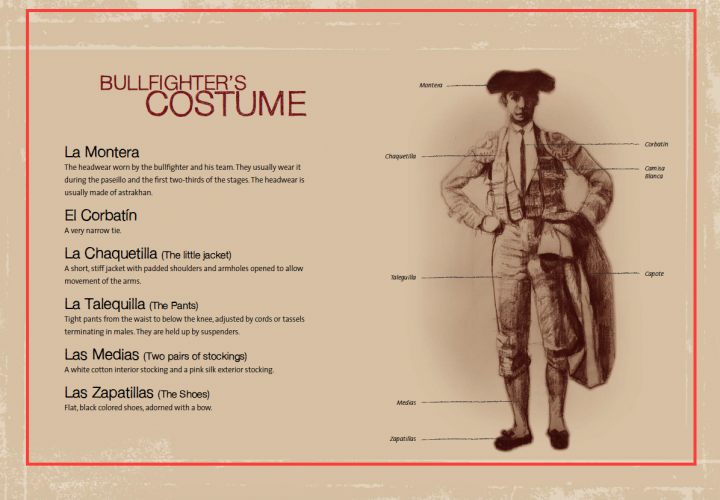Season 2017 starts on March 23rd. Tickets already available on line at: www.bullfightticketsmadrid.com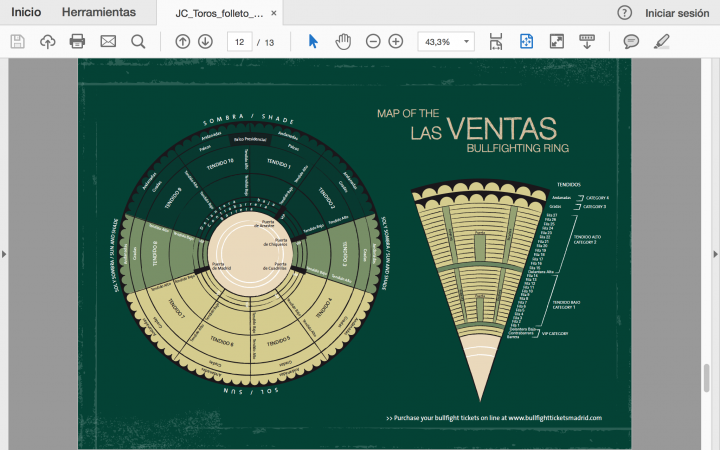
NAMES OF THE BULL ACCORDING TO HIS AGE
Las Ventas Bullfighting Ring
Las Ventas Bullfighting Ring
was built to replace the bullfighting
ring located off the Aragon highway.
The newer arena was built to be larger,
given that the seating capacity of the
previous one was insufficient because
of the demographic growth that Madrid
experienced during the first-half of the
twentieth century.
The new bullfighting ring was
inaugurated on October 12, 1934. It
remained open without interruption
until 1936, the year in which the Spanish
Civil war began. The construction was
directed by the architect Jose Espeliu,
who died without seeing his work
completed. The ring is partially designed,
using a Mozarabic style. The walls are
inlaid with ceramic depictions of the
shields of all the Spanish provinces, as
well as their purely ornamental motifs.
The arena is 60 meters in diameter.
The bullring has a seating capacity
of 23,000 spectators. At present, 80%
of the seats belong to season ticket
holders. The bullfighting ring also
has a Horse Arena, a Towing Arena
an infirmary (which can be reached
directly from the bullring), a chapel and
a bullfighting museum, that are open
to the public. Currently, the owner of
the bullfighting ring is the regional
community government of Madrid, but
various private companies manage it.
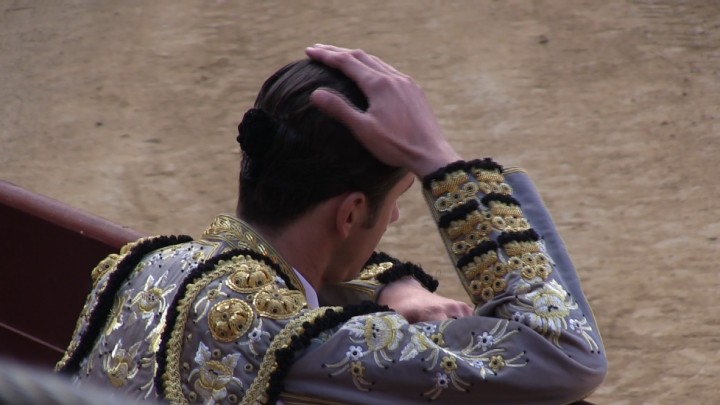
ANATOMY OF THE BULL
Bullfighter’s Costume
Serie Ganaderías: Victorino Martin
La prestigiosa Ganadería de Victorino Martín es propiedad de Don Victorino Martín Andrés, nacido el seis de Marzo de 1929 ,en Galapagar, donde transcurrió su infancia, bruscamente interrumpida en 1936 por el encarcelamiento y posterior fusilamiento de su padre. Regentó junto a sus hermanos varias carnicerías en la provincia de Madrid y fue entonces cuando comenzaron a comprar ganado para dar espectáculos taurinos. En 1953 inscriben en la Asociación de Ganaderos de Reses de Lidia el hierro de la V con el nombre de Adolfo Martin Andrés . Pero la propia ganadería Victorino Martín no se fundaría hasta el año 1960.
Victorino se casó el 30 de Noviembre de 1958, matrimonio que dio como fruto sus hijos Isabel y Victorino. En 1988 se separó y volvió a contraer matrimonio. La ganadería tiene su sede en las Fincas extremeñas de Las Tiesas de Santa María y La Gama, cuenta con un número aproximado de reses de 1.100 cabezas de las que salen alrededor de 100 toros anuales de gran trapío y bravura para la lidia. La calidad de estos toros depende esencialmente de la genética, la alimentación y el hábitat. El coste de crianza suele oscilar entre los 4.500 y los 5.000 euros, lo cual supone que ,en muchas ocasiones, no sea rentable desde un punto de vista económico . Ha sido galardonada con gran cantidad de premios del máximo prestigio y es considerada un referente de altísimo nivel en el mundo de la ganadería del toro bravo.
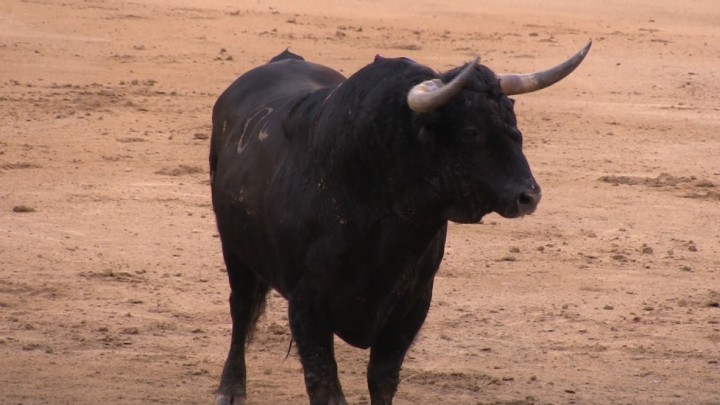
The President
The President of the Bullfight
The president of the bullfight must ensure that the bullfight conforms
to current regulations. He conveys his orders to the bullfighters,
bullring’s staff and the spectators by using different colored kerchiefs
to represent the various meanings listed below:
The president uses the white kerchief to signal the
beginning of the bullfight, to indicate changes to the
different stages in the bullfight, to give warnings, to
announce the release of the bulls and to award prizes
to the bullfighters i.e. the ear and the bull’s tail.
The President uses the green kerchief to return the bull
to the pen due to a physical defect.
The President grants pardon to the bull in light of
its bravery. To carry out the pardon, there must be
a petition from the public and the bullfighter and
stockbreeder must also agree. The bull is, thus, allowed
to roam free again in the countryside from which he
came.
The President uses it to order the dead bull to be pulled
around the ring, so it can receive the applause of the
spectators in tribute to the bull’s good behavior.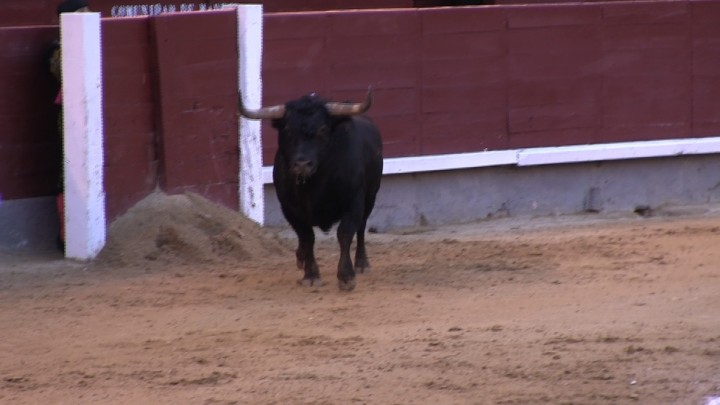
The loose bull
THE LOOSE BULL
As bullring’s staff show a banner with the name and weight of the first bull on it, oneof the “Alguacilillos” gives the key to the bullpens to the “Chulo de Toriles”(the person in charge of opening the door from which the bull comes out into thering). Once the “Areneros” have cleaned the ring and everything is in order, thepresident taking out the white kerchief, orders the first bull to be released.After a short sound of the bugles, the door of the bullpen is opened and the bull goesout into the arena
What does “La Faena” mean
 “La Faena” is a collection of a series of connected
“La Faena” is a collection of a series of connected
steps the bullfighter makes, remaining still while the
bull circles him. The bullfighter´s intent, through the
power of his cape and not because of the bull´s natural
fierceness, is to make the animal charge. The most
valued elements in this stage are the excitement of the
bullfighter´s execution of steps, together with the courage
the bull displays to oppose difficulties. This ends with the
“Suerte suprema”, and is followed with the killing of the bull.
La Alternativa
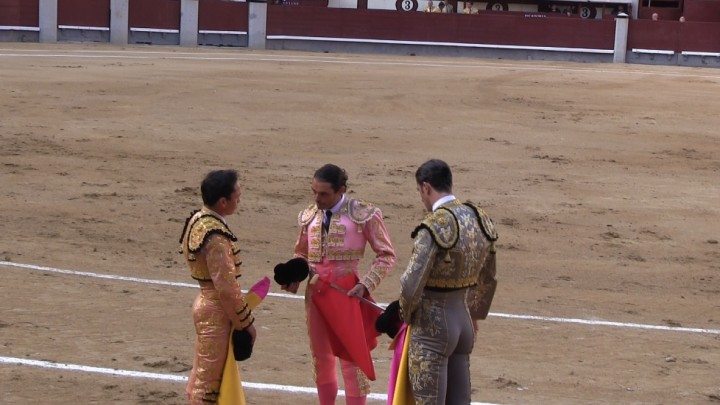 What is LA ALTERNATIVA?
What is LA ALTERNATIVA?
The “Alternativa” is a ceremony in which a bullfighter obtains the standing of “Matador de Toros”. In “La suerte de Matar” the veteran bullfighter approaches the novice with the sword and red cape (attached to a stick) in the left hand, and they are revealed at the same time. The veteran then hands over the sword and cape, as the novice turns over the cape to the veteran. Having finished the exchange, the “Padrino“ (the bullfighter that conducts the ceremony) usually congratulates or gives advice to the new swordsman or the protégé and they end by greeting each other. The ceremony is repeated with the second bull, but now the new swordsman is the one to give the bullfighting effects to the veteran.

